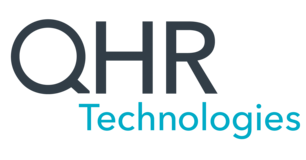
QHR Product Ideas
The spirit of the QHR ideas portal is to collect ideas and feedback from our users for integrations, enhancements, and new features.
We want to hear from you, and encourage you to submit, comment, and vote!
Please note that this site is not regularly monitored, and that there may be a delay in response to your submissions.
QHR reserves the right to choose what is built into the application, and it is the intention of QHR to build the software to meet the needs of the marketplace.
User Resources:
Accuro Learning Academy, our eLearning platform (reach out to Client Services for your sign-up code)
For further support, please reach out to Accuro Client Services:
1-866-729-8889
Accuro Menu > Help > Send Feedback
Interested in providing regular feedback on product ideas and designs that are team is exploring? Send an email with your Name, Email, Specialty and Province to uxresearch@qhrtech.com with the subject "Interested in participating in research".
The spirit of the QHR ideas portal is to collect ideas and feedback from our users for integrations, enhancements, and new features.
We want to hear from you, and encourage you to submit, comment, and vote!
Please note that this site is not regularly monitored, and that there may be a delay in response to your submissions.
QHR reserves the right to choose what is built into the application, and it is the intention of QHR to build the software to meet the needs of the marketplace.
User Resources:
Accuro Learning Academy, our eLearning platform (reach out to Client Services for your sign-up code)
For further support, please reach out to Accuro Client Services:
1-866-729-8889
Accuro Menu > Help > Send Feedback
Interested in providing regular feedback on product ideas and designs that are team is exploring? Send an email with your Name, Email, Specialty and Province to uxresearch@qhrtech.com with the subject "Interested in participating in research".

I can't speak for other provinces, but in Ontario, the CPSO only allows OCR (optical character recognition), if the original document is retained. There may be some convenience to having a searchable document, but no space would be saved if you have both a text version and the image.
There are also risks to using OCR on pages with numbers (like lab results). A poor quality fax or scan could easily mix up similar looking numbers, like 3 & 8
http://www.cpso.on.ca/policies-publications/policy/medical-records